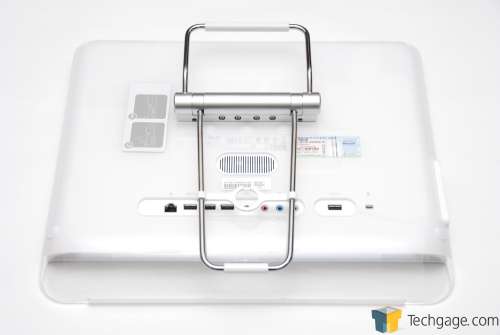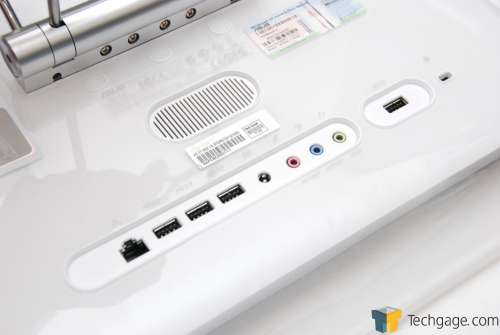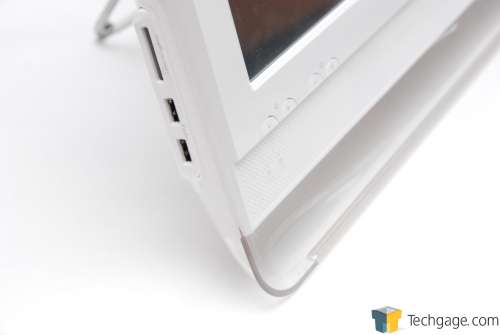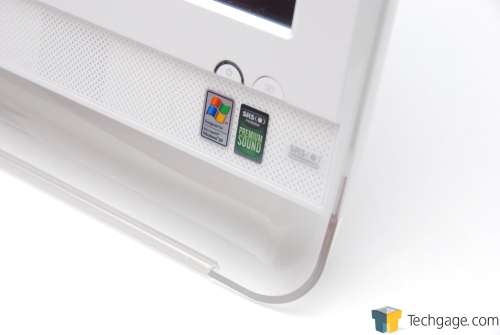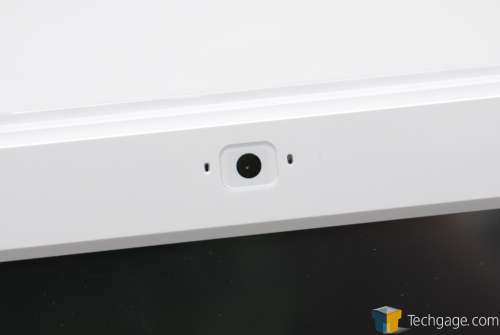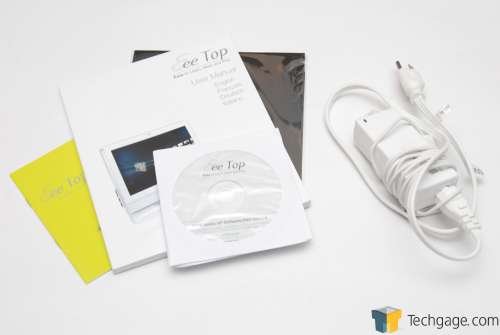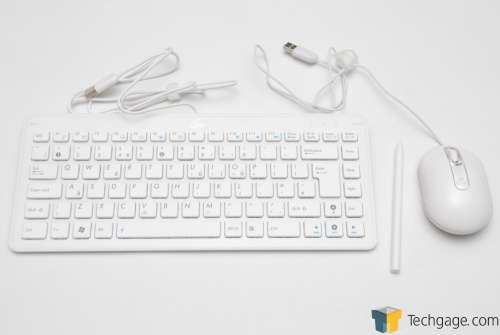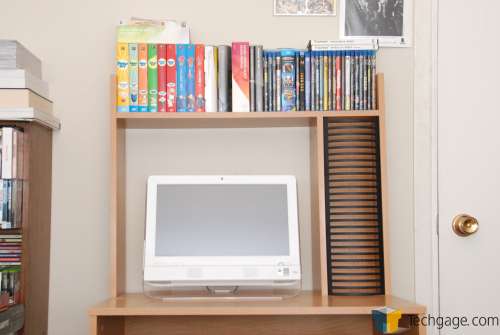- Qualcomm Launches Snapdragon 4 Gen 2 Mobile Platform
- AMD Launches Ryzen PRO 7000 Series Mobile & Desktop Platform
- Intel Launches Sleek Single-Slot Arc Pro A60 Workstation Graphics Card
- NVIDIA Announces Latest Ada Lovelace Additions: GeForce RTX 4060 Ti & RTX 4060
- Maxon Redshift With AMD Radeon GPU Rendering Support Now Available
ASUS EeeTop PC ET1602 Touchscreen PC
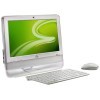
All-in-one PCs aren’t new, but an affordable one equipped with a touchscreen is. That’s exactly what ASUS delivers with their EeeTop PC, a 15.6-inch offering designed to give you a new way to use your computer, while living up to the standards that the Eee brand has become for. While it lacks beefy hardware, the under $600 price tag creates a very attractive product.
Page 1 – Introduction
At the Consumer Electronics Show held earlier this year, ASUS made it clear that touch was in their future, and to help prove it, they unveiled a few products at the show. Of these, two belonged to the Eee family of products, including the Eee PC Keyboard, and also the EeeTop PC. The former impressed us enough to earn itself one of our “Best of CES 2009” awards. Months later, that’s still a product I’m interested in trying out, and as we discovered not long ago, the wait may not be much longer.
The other touch product that caught the attention of many was the company’s EeeTop PC, an all-in-one solution that spices things up with the addition of a touchscreen. When I first stumbled on one of these at the show, I admired it for what it was, but chalked it up to being designed for a specific niche. However, after having spent the past few weeks with the unit in our lab, I can honestly say my expectations have been far exceeded.
Unlike the netbooks that took the world by storm in the fall of 2007, the EeeTop PC is ASUS’ first complete desktop Eee PC (the EeeBox lacked a display), but it keeps the same goals in mind that the Eee brand has become well-known for: “Easy to learn, Easy to work, Easy to play”. This PC certainly lives up to all three of those, as we’ll showcase throughout the article.
The most common question I’ve seen regarding the EeeTop PC is of course, “Who is it designed for?”, and to be honest, that question is a little difficult to answer. The first thought I had was “kitchen PC”, because I could easily picture this on a countertop displaying a recipe while supper is being made. But, it can also be used as a portable in-house PC that can be brought anywhere, and it’s also an attractive offering for kids. If you have access to power outside the home, you could even bring it outside with you to refer to information while doing yard work or car maintenance. The possibilities are endless.
Closer Look at ASUS’ EeeTop PC
Touchscreen functionality is nothing new, but this is the first time that a solution has become available that actually proves to be a viable solution for consumers, thanks in part to its relatively low price-point. While the EeeTop PC carries an SRP of $599, for example, HP’s TouchSmart all-in-ones start off at $1,149. While they improve upon this unit in most every way, their pricing starts at double on the HP, so ASUS is likely to receive most of the attention for the next while, where touchscreen AIO PCs are concerned.
What we should clear up is what the EeeTop PC is not, because there seems to be a lot of confusion floating about. First and foremost, like a netbook, the EeeTop PC is designed to supplement your other PCs, not replace them. You shouldn’t expect to pick this up and want to complete your work there. While it’s possible, it’s not ideal, partly in thanks to the overall power offered and also the display’s resolution.
What it is meant for is lighter workloads… simple purposes, such as sitting at the table and eating breakfast while reading CNN, or to be used to play music and display a recipe while you’re cooking a meal. The PC is not designed to be a real multi-tasker, and it’s important to make that distinction. As we’ll find out later, it actually does multi-task rather well, but an actual desktop PC is always going to be better for real work or computing at its absolute best.
Complete specifications can be found on the following page, but to give a quick run-down, the ET1602 is a 15.6″ model that features Intel’s Atom N270 (1.6GHz, same CPU as most netbooks), 1GB of RAM, a 160GB hard drive and other common features, such as 802.11n wireless and 6 USB 2.0 ports. As you can see in the stock photo above, the unit is quite stylish, and as the below photo shows, it keeps a clean design… something even Apple would be proud to call their own.
In the above photo, the top bar is a carrying handle (and this thing is very light, so it works well), while the bottom is to stabilize it while sitting on a desk. Rather than the display sit straight up, it sits on a comfortable 28.5° angle, but can be adjusted to 82.5° should you feel the need for an even stronger incline. In addition to the USB, LAN and audio ports on the back, a Kensington security lock is also available.
On the left-side of the device, you’ll find two of the six USB ports and also a memory card reader. The front buttons on this side are used to increase and decrease the volume and display’s brightness.
On the opposite side, two more buttons can be found, one for the machine power and the other for the display on/off toggle. If at anytime during use you want to shut the display off to save power, this button takes care of it instantly, with absolutely no delay. It’s recommended to take this route if you plan to get up and leave the PC for a while, since the entire unit draws 11W less power overall while the display is turned off.
Interestingly enough though, even if the display is toggled off, the touch functions still work. So, if you feel the need to clean the display, you’ll want to shut the entire machine down, rather than only the display.
As with most notebooks, netbooks and monitors, a 1.3 megapixel web cam and microphone are included. This allows you to set up the PC and use it as a communication hub, and with Skype pre-installed, the task couldn’t be easier (Skype actually happens to be the first option listed once in Windows, so ASUS had an obvious confidence about its usage).
Aside from the PC itself, various DVDs are included alongside the manuals and also a cloth for wiping the dust off of the display. Note that the EeeTop PC does not include an optical disc drive, so these DVDs will have to be used with the help of an external ODD (typical price for these are $50 for a full-sized model and $75 for a slim-line).
Although the primary draw of the PC is its touchscreen, ASUS isn’t naive enough to believe that a keyboard still won’t be needed. Therefore, a very slim keyboard is included alongside a mouse. It should be noted that you can use the PC just fine without either, but there may come a time when you’ll appreciate the keyboard especially, such as typing e-mails or something similar. I only found myself using the mouse when I needed to right-click something, but that’s for the sake of convenience, since the reason for right-clicking can most often be handled with the help of a top menu in a given application window.
While your fingers will work fine on the display, the accuracy cannot match what a stylus can offer, so ASUS includes a solid-plastic pen for that use. So you don’t lose it, it can be stashed inside the keyboard when not in use.
While taking photographs of the unit, I quickly realized just how difficult a task that was. Being a stark-white product, the photos either showed the unit too bright and the background just right, or the background too bright and the unit too dark. It was a lose/lose situation. So rather than deliver a white background for this one, I situated the unit on a desk usually equipped with one of our benchmarking PCs. Though it’s not the best picture (I admit that), it does give some sense of scale, especially when you compare the unit to the Blu-rays up top. Please note that the monitor in this photo is on a ~40° angle.
With our tour wrapped up, let’s continue along to a look at both the setup process and also a look at what software comes equipped with the PC.
Support our efforts! With ad revenue at an all-time low for written websites, we're relying more than ever on reader support to help us continue putting so much effort into this type of content. You can support us by becoming a Patron, or by using our Amazon shopping affiliate links listed through our articles. Thanks for your support!





